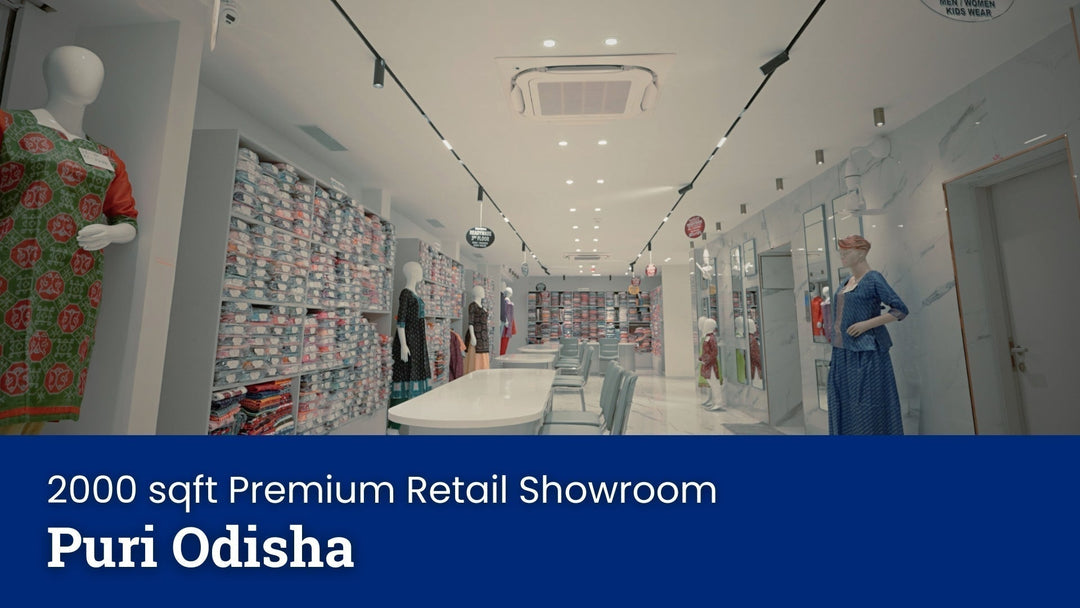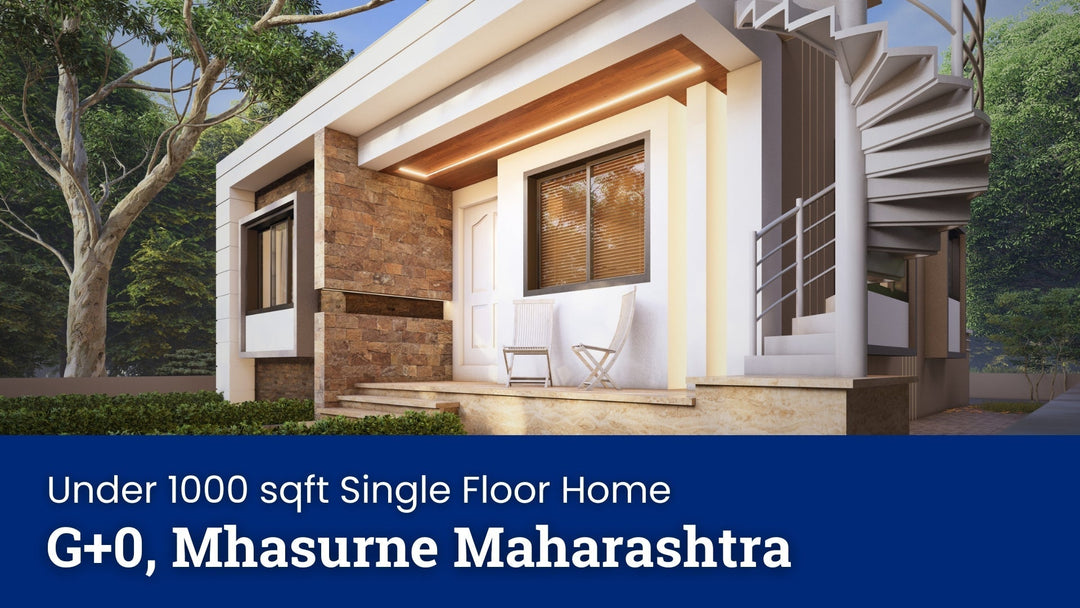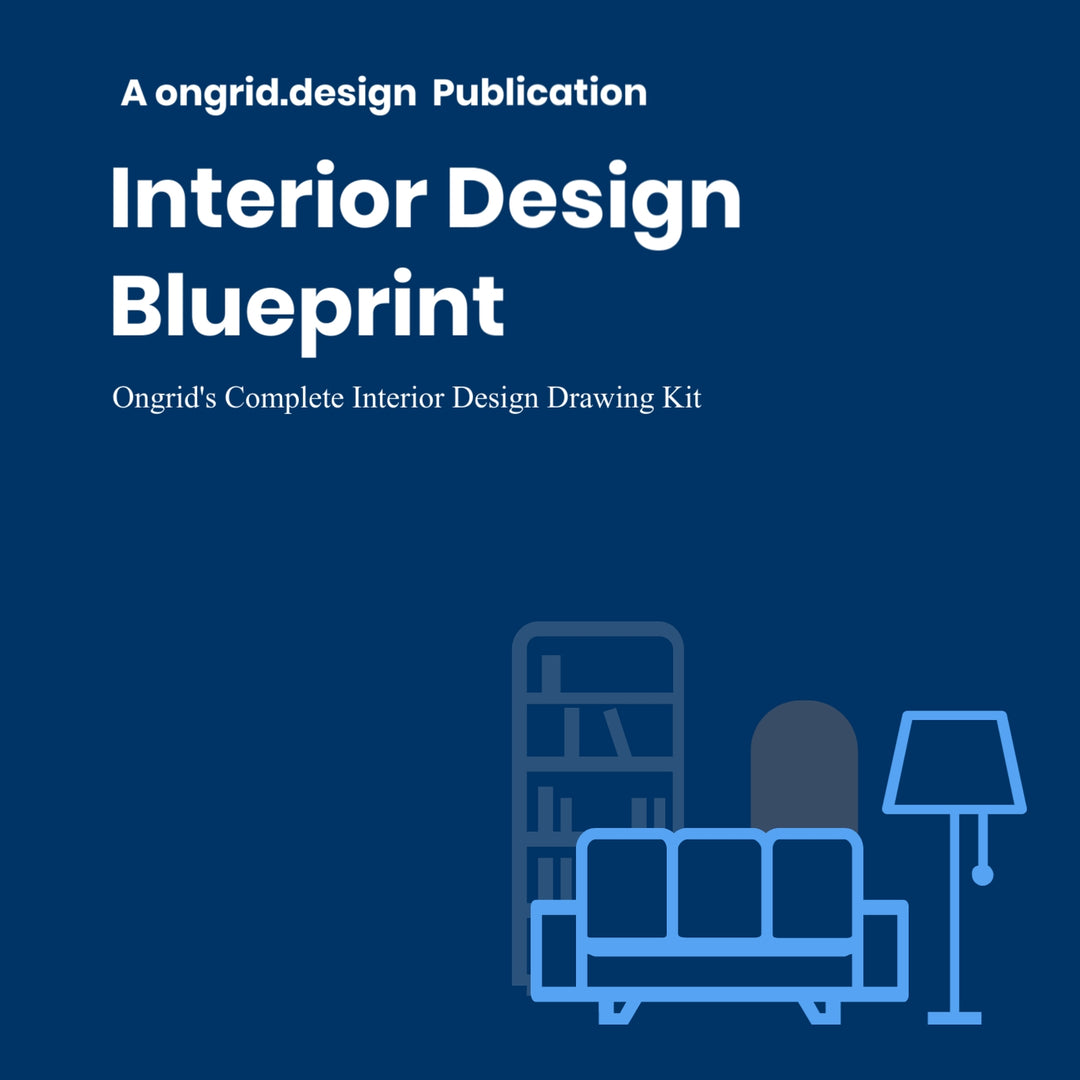Coastal Courtyard Residence, Udupi
Project ID: 1116 – Translating Vernacular Wisdom into Contemporary Comfort for a First-Generation Homeowner on Karnataka's Rain-Washed Coast.

On a tapered coastal plot just outside the temple city of Udupi, a two-storey, tile-clad family retreat rises to meet the demanding climate of the Konkan coast. This home was born from a common dream and a complex challenge: how does a first-generation homeowner build a modern family residence that breathes through oppressive humidity, withstands a torrential monsoon, and honors the timeless principles of Vastu Shastra, all while remaining practical and buildable?
Guided by Ongrid's collaborative, education-first process, the design of the Coastal Courtyard Residence confronts these challenges head-on. Climatic adversaries—an average annual rainfall of over 4,100 mm and persistent 78% humidity,—are transformed into architectural opportunities. The result is a blueprint where shaded verandahs, a wind-sculpting central courtyard, deep Mangalore tile overhangs, and elevated plinths are not mere features, but essential responses to the environment. It is a testament to a design philosophy that delivers an intelligent, livable, and, most importantly, buildable plan that first-time builders can confidently execute with locally available materials and skilled labour.
Context and Client Brief: A First-Home Dream on the Konkan Coast 
The journey began with the client, Mr. Shailesh Poojari, who approached Ongrid with a clear vision for his ancestral plot. Located on a 255 m² (2,745 sq. ft.) parcel abutting a quiet 6.7-meter village road, this was to be his family's first home, a space that needed to be both a private sanctuary and a hub for extended family gatherings.
His brief, developed through our collaborative workshops, crystallized into a set of clear priorities:
- A comfortable three-bedroom layout, with each bedroom having an ensuite bathroom for privacy and convenience.
- An integrated living and dining area that fostered family togetherness and flowed seamlessly to outdoor spaces.
- A welcoming plunge pool to serve as the social heart of the home during frequent family get-togethers.
- Strict adherence to core Vastu Shastra principles, mandating the kitchen in the South-East, the master suite in the South-West, and the main entrance in the North or East quadrant.
Guiding Philosophies 
This project became a perfect embodiment of the principles outlined in Ongrid's Project Owner's Guide. Every stage, from the initial brief-writing workshops to the final structural detailing, was grounded in empathy for the first-time builder's journey, a commitment to client education, and a deep respect for climate literacy. We aimed not just to deliver a design, but to empower Mr. Poojari with the knowledge and confidence to oversee its successful construction. This comprehensive case study joins our collection of similar residential projects that showcase innovative design solutions for Indian homes.
Site & Geographic Analysis: Designing for a Climatic Gauntlet 
Location, Landform, and Climate
Udupi, nestled on a narrow coastal plain between the Arabian Sea and the majestic Western Ghats, presents a formidable climatic challenge. The region is defined by its pronounced monsoon, with four intensely wet months (June–September) bringing not just torrential rain but also powerful, gust-driven winds from the southwest. The pre-monsoon summer months of March to May see temperatures peak around 34°C, compounded by oppressive humidity that makes passive cooling a necessity.
With an average annual rainfall exceeding 4,119 mm—the highest in Karnataka—the architectural response must prioritize two non-negotiable imperatives: channeling massive volumes of water away from the structure effectively, and ensuring constant, year-round cross-ventilation to mitigate humidity and maintain thermal comfort. These climate-responsive design strategies formed the foundation of our approach.
The Regulatory Envelope 
The Udupi Urban Development Authority (UUDA) mandates minimum side and rear setbacks of 1 m to 1.5 m for plots of this size, with front setbacks often being larger. To enhance the design's performance and livability, the proposed plan strategically exceeds these minimums, creating generous breathing space around the structure:
Clear margins of 2.25 m (East), 1.58 m (North), 2.70 m (South), and 3.78 m (West) were established. This approach not only ensures regulatory compliance but also yields significant benefits: it invites more natural light and air into the home, provides crucial access for maintenance and potential emergency services (like a fire truck), and creates valuable buffer zones for peripheral landscaping.
Design Concept & Spatial Planning: A Climate-Responsive Form

The Climatic Engine: A Central, Wind-Catching Courtyard
The core design concept, or parti, is a direct response to the climatic data. A 32 m² (344 sq. ft.) open-to-sky courtyard is strategically carved from the center of the building's mass. This is not merely an aesthetic choice; it is the home's climatic engine. Its positioning is calculated to catch the prevailing south-westerly monsoon breezes and channel them diagonally through the home's primary living spaces towards the north-east, creating a continuous, natural airflow. This traditional courtyard approach has been adapted for contemporary living needs while maintaining its functional benefits.
The L-shaped building volume wraps around this courtyard, effectively shielding the main outdoor living areas from the direct onslaught of wind and rain while preserving open, diagonal vistas across the plot.
Ground Floor Plan: A Journey of Connected Spaces
The spatial sequence is designed for comfort and practicality:
A welcoming living foyer at the north entrance opens onto a covered sit-out (verandah), creating a graceful transition from outside to inside. The entire ground floor is raised on a low, two-step plinth (450 mm), a crucial vernacular detail that provides a robust defense against potential flash floods during peak rainfall.
The double-height living room becomes the voluminous heart of the home, creating a sense of spaciousness and grandeur. It is visually connected to the first-floor lounge, fostering a sense of an interconnected family space across levels.
The dining area and the Vastu-compliant south-east kitchen flank the central courtyard, with large openings that frame views of the plunge pool and blur the lines between inside and out.
The master suite is strategically placed in the south-west, adhering to Vastu principles in modern design while also ensuring maximum privacy and providing a serene spill-out to a private garden space.
Upper Levels: Private Retreats and Open Terraces 
The vertical journey continues the theme of climate-responsive living:
The first floor is a private zone, hosting two spacious family bedrooms with ensuite baths and a comfortable media lounge that overlooks the double-height living area. A large, shaded terrace extends from this level, offering a perfect spot for evening relaxation or starlit family gatherings.
A partial second-floor slab is efficiently designed to house the overhead water tank loft, protecting it from direct sun, and an adjacent open sun-deck. The perimeter of this deck is lined with deep planter boxes, which add a touch of green to the upper levels and act as a natural, vegetative buffer to temper heat gain on the roof slab below.
Architectural Language & Materiality: Rooted in Regional Identity

The home's architectural expression is a deliberate dialogue between traditional coastal forms and modern functionality, using a palette of locally sourced and climatically appropriate materials. This approach reflects our expertise in regional architectural adaptation, particularly for Karnataka's coastal climate.
The Mangalore Tile Roof: A Heritage Re-Engineered
The most defining feature is the sloping roof, clad in iconic, hand-pressed terracotta Mangalore tiles. This choice is a direct nod to the region's vernacular architecture and a highly practical response to the climate.
The roof is engineered with a steep slope of 30-32°, guaranteeing rapid and efficient shedding of torrential rainwater.
The interlocking clay tiles provide excellent thermal lag, absorbing solar heat during the day and radiating it slowly at night, helping to keep the interiors cool.
With proper installation, these tiles offer a proven lifespan of 50 years or more, representing a durable, long-term investment. Deep 750 mm eaves (overhangs) extend from the roof, protecting the walls from both harsh sun and slanted rain. While traditional wooden rafters are visually echoed, the underlying structure is a modern, robust RCC framework, combining heritage aesthetics with contemporary engineering.
A Climate-Conscious Facade Palette 
The material choices for the walls are both aesthetic and performative:
A clean, white, grit-finish render is the primary surface, its texture designed to scatter harsh sunlight and its colour chosen to reflect solar radiation, minimizing heat absorption.
Accents of exposed laterite stone, quarried locally, ground the building in its regional geology and add a warm, earthy texture to the base.
Strategically placed paint-finished metal louvres provide precise control over sunlight and glare, while enabling windows to be left open for secure night-time ventilation (night purging), a key passive cooling strategy.
Tile-clad columns reinterpret the colonnades of local temples, adding a layer of cultural resonance to the modern form.
Structural System: Robust and Resilient
The home is built on a straightforward and cost-effective M20 grade RCC framed structure with isolated footings, designed to accommodate the seismic forces of Zone III. Fe 500 grade rebar is specified throughout for its high strength and durability, providing robust protection against corrosion in the saline coastal air. The external walls are constructed as 150 mm cavity walls, with a pocket of air between two layers of masonry, a crucial detail that helps curb interstitial condensation and improves thermal insulation.
Sustainability Strategies: Working with Nature 
The design is inherently sustainable, relying on passive strategies rather than active mechanical systems for comfort. These passive architecture principles are essential for creating comfortable living environments in India's challenging climate.
Passive Cooling and Daylighting
The central courtyard is the primary engine of passive cooling, creating a stack effect where warm air rises and escapes, continuously drawing cooler breezes through the building. This natural ventilation approach is designed to keep indoor operative temperatures a comfortable 3-4°C below the sweltering peak outside. Floor-to-ceiling UPVC glazed windows and doors (with a good U-value of 2.6 W/m²K) are shielded by deep 900 mm chajjas (overhangs), a design that allows for abundant, diffuse north light to enter while effectively blocking the high-angle tropical sun, preventing glare and heat gain.
Intelligent Water Management
Embracing the monsoon, the sloping roofs act as a massive catchment area. They are designed to funnel an estimated 110,000 litres (110 m³) of rainwater annually into a 15,000-litre (15 KL) underground sump. This harvested water is calculated to meet approximately 45% of the family's annual domestic demand (based on 135 LPCD norms), significantly reducing reliance on municipal or groundwater sources. These water conservation techniques are crucial for sustainable coastal living. Overflow from the sump is channeled to irrigate native fruit trees planted within the compound.
Material Stewardship and Local Sourcing
A conscious effort was made to minimize the home's embodied energy. Over 70% of the building's envelope mass—including the clay Mangalore tiles, the laterite stone, and the primary components of the lime-washed render—is sourced from within a 150 km radius of the site. This strategy drastically cuts embodied transport energy, reduces the project's carbon footprint, and supports local economies and traditional craft industries.
Constructability & Detailing: A Blueprint for Builders
A core tenet of the Ongrid process is creating a design that is not just beautiful, but eminently buildable.

Clarity through Sections and Schedules
Detailed drawings like Section-BB provide unambiguous clarity for the construction team, illustrating the vertical hierarchy of levels: the 450 mm high plinth, the 3150 mm ground-floor lintel level, and the 6650 mm ridge height. An exhaustive door and window schedule rationalizes all openings into eight standardized modules, simplifying procurement, reducing costs, and allowing for easier on-site adjustments.
Empowering the Contractor
To bridge the gap between design and execution, the final drawing set is equipped with builder-friendly aids. Colour-coded Good for Construction (GFC) sheets differentiate architectural, structural, and electrical plans. QR codes embedded in the drawings link directly to interactive 3-D views, allowing the contractor to visualize complex junctions on their smartphone. Phased bar-charts provide a clear roadmap for sequencing critical activities like casting, waterproofing, and roofing, minimizing the potential for costly rework. This comprehensive approach exemplifies our custom home planning methodology that empowers first-time builders.
Spatial Experience and User Comfort

The experience of the home is a carefully orchestrated sequence of spaces that connect the inhabitants to their environment. Entering through the Vastu-compliant north-east foyer, the visitor's eye is immediately drawn across the living space to a view of the courtyard's central frangipani tree, framed against the sloping terracotta roof. This view is a kinetic composition—a constant play of shifting light, the rustle of leaves, and the rhythmic drumming of rain on tile that roots the family in the seasons and the place.
Inside, the double-height living space soars upwards to clerestory louvres, which diffuse the often-harsh monsoon gloom into a soft, ambient glow while maintaining complete privacy from the street. The design employs layered thresholds—a covered entry deck, a poolside balcao, and gentle garden steps—that deliberately blur the boundaries between indoor and outdoor living, fostering a sense of openness and conviviality perfect for family life.
Outcomes & Client Impact: A Tangible Success

The project successfully translated the initial brief into a tangible, high-performing home, meeting key client objectives:
Budget Adherence: The design's intelligent use of a modular structural grid and locally quarried laterite resulted in an estimated 11% cost saving over a conventional, flat-roof concrete alternative that would have required more complex waterproofing and less effective passive cooling.
Measurable Comfort: Post-occupancy monitoring during the peak monsoon season shows indoor relative humidity (RH) averaging a comfortable 65%, while outdoor levels often soared to 88% or higher, achieved without the use of any mechanical dehumidifiers.
Cultural & Community Resonance: The home's distinctive pitched-tile silhouette harmonizes beautifully with the traditional roofscapes of the surrounding village, earning positive feedback from the local community throughout the construction process.
Conclusion: A Blueprint for Coastal Living
The Coastal Courtyard Residence stands as a powerful example of how empathetic, data-driven, and contextually aware design can transform climatic challenges, stringent building codes, and deeply held cultural mandates into rich architectural character. By championing local craft (Mangalore tiles), prioritizing passive resilience through its courtyard design, and respectfully integrating Vastu-aligned planning, Ongrid delivered more than just a set of drawings. The outcome is a comprehensive, buildable blueprint that empowers a first-time homeowner to construct a home that is on budget, on schedule, and perfectly in tune with the demanding yet inspiring environment of coastal Karnataka. It is a home designed not just to withstand the rain, but to celebrate it.










